An Ultimate Guide to Getting Customer Feedback
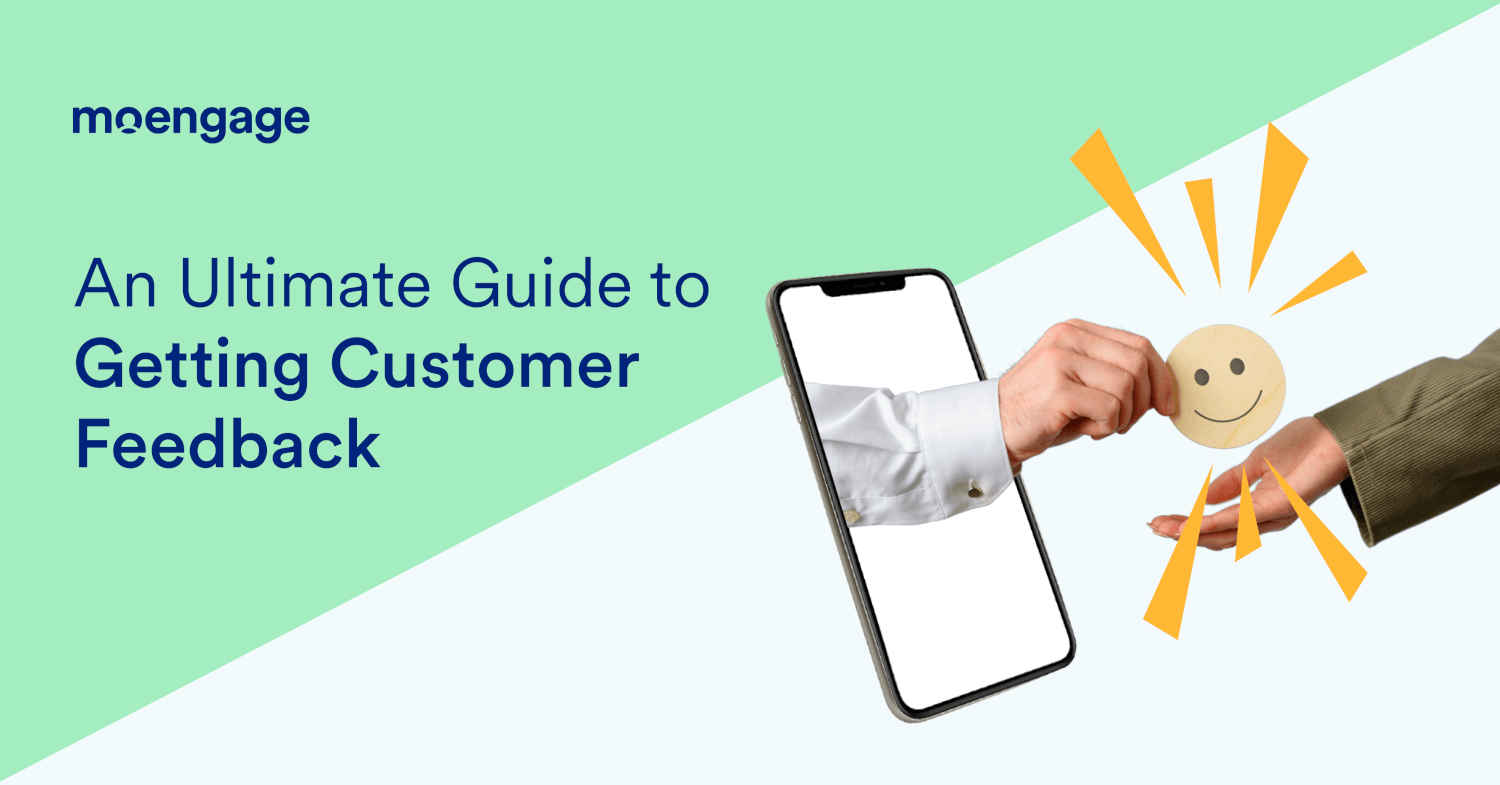
Reading Time: 11 minutes
Brands put a lot of effort into acquiring new customers. They plan extensive campaigns to create brand awareness. However, they do not pay enough attention to how to obtain customer feedback. According to HubSpot, 42% of companies don’t collect feedback from their existing customers. Not collecting feedback can often be disastrous! According to Neilsen, 83% of customers trust recommendations from peers over advertisements.
As a customer success manager, I understand the value of gathering feedback. I’ve created this comprehensive guide on how to get customer feedback and act on it.
I hope you find it helpful!
What is Customer Feedback?

Customer feedback is a proactive method of gathering information about the experience with your product. It could be direct messages, customer surveys, social media mentions, website feedback, reviews, ratings, or in-person interactions.
Positive reviews help you improve the product and customer experience and meet their expectations.
Negative reviews could affect your brand’s reputation. Acting immediately on such negative reviews does help regain your customer’s trust. It enables you to deliver more value and build customer loyalty. More importantly, it eliminates your assumptions about your product/service and objectively views it.
Why is Customer Feedback Important?
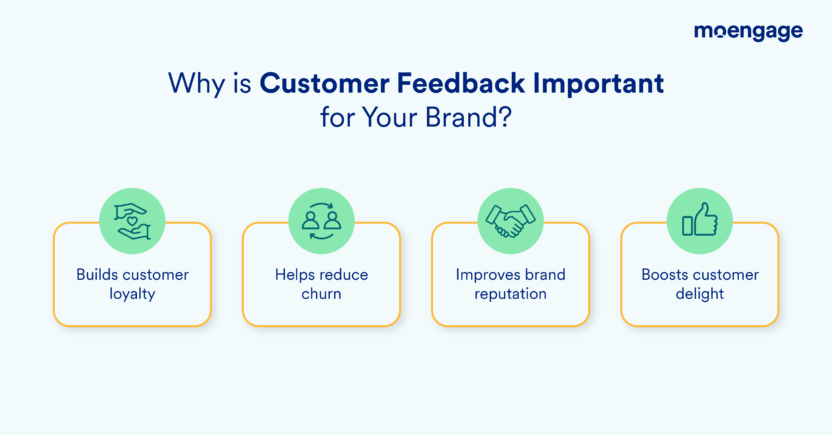
Build Customer Loyalty
According to Edelman Trust Barometer Special Report, 75% of customers will buy from a brand they trust, even if it’s not cheaper. This means building on their trust can improve the bottom line!
So, how can you gain your trust via customer feedback? Customer feedback helps to share their feedback about the product/service. They feel valued when you, as a company, listen to them. The trust deepens further when you act on their feedback.
Results in Improvements
Do you know what your customer wants? Customer feedback helps answer this. It lets you improve your product that meets their expectations, for example, by offering particular product features or analyzing trends.
Reduces Churn
Unhappy customers will switch in a heartbeat if they are unsatisfied!
Collecting feedback, therefore, help customers share their personal experiences. These insights can help fix problems within your product/service.
Are you looking for rich insights into your power customers? Yes, customer feedback can help the event with that!
If you’re worried about churn, your customer feedback survey responses and the data generated from those will help improve your marketing tactics.
Improves Brand Reputation
Brands that care about their reputation do an outstanding job listening to customer feedback and acting on them proactively.
A brand that cares earns more trust and referrals. Even if the brand makes a mistake, it can salvage the situation by proactively rectifying it and generating a positive review!
Results in Customer Delight
92% of customers trust word-of-mouth recommendations from family and friends.
Happy customers will always recommend a brand to others. Interacting with them, collecting their feedback, and acting on it is a great way to delight your customers and acquire more insights into your product. This activity shows that you are constantly thinking about them and can lead to future purchases.
How to Get Customer Feedback?
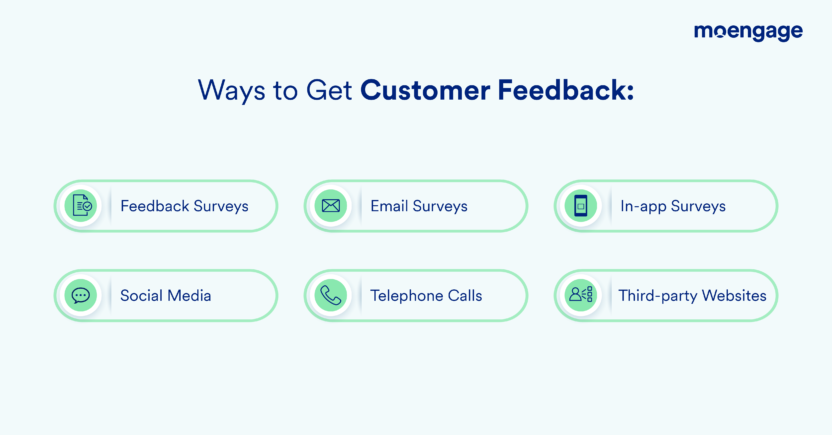
There are various customer feedback methods that you can use to gather feedback.
Customer Feedback Surveys
Customer feedback surveys are the most straightforward way to gather feedback.
Create a survey using tools like Survey Monkey and send it to customers. Alternatively, you can post the link on your social channels to reach many customers.
Create short surveys with a minimum of 5-10 essential questions to get more customer feedback and motivate them to respond, as they don’t have to put in much effort. Make sure to match customer feedback questions to improve customer experience or even reduce overall churn.
Let’s look at an example. If your goal is to know whether customers liked your product, ensure that the questions are complicit to product feedback. Every piece of feedback should be oriented towards factors such as product quality, possible friction points, and technical capabilities, which in the end, can be used to garner some actionable feedback.
Use a mix of close-ended and open-ended questions. Close-ended questions could help you measure overall customer satisfaction. Open-ended questions allow customers to express their in-depth thoughts about the product or service.
Email Surveys
Email surveys will enable you to reach your audience almost instantly.
Since emails are checked regularly, your email surveys will help provide implicit feedback. Trigger an email survey 3-5 days post purchase, however, restrict yourselves from asking too many questions. The key is to keep it short and sweet.
Embed the survey in the email so your customers can respond directly instead of being directed to a browser. This helps improve the response rate.
In-app Surveys
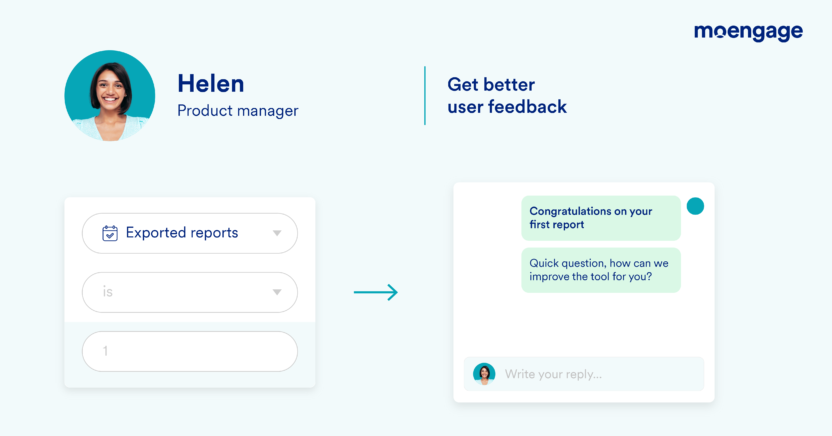
You can request feedback from your customers within the app itself. Add a feedback box at the end of the page or after an action is taken. You can trigger the in-app survey as soon as the customer completes an action, such as purchasing a product or using a feature.
Intercom, for instance, triggers the in-app customer surveys as soon as someone uses a particular feature. This gives them an idea of what the customer likes and dislikes. You also get to know the common feature requests from customers that could improve their experience.
Social Media
1 in 3 social media users prefers to interact with the social media support team rather than call or email.
Monitor social media channels and look for mentions and comments across all platforms. Customers are impatient, and they want an immediate response. And social media is one of the easiest ways to get customers and communicate the right solution or suggestions.
Try to respond to customer feedback and queries quickly to create a positive customer experience. Use listening tools and sentiment analysis to monitor feedback and gauge how customers feel about your product or service. You can also share the customer survey link on social media to get more feedback.
Telephone Calls
Apart from the new-age channels such as social media and in-app chats, you can gather feedback through calls too.
Calls are more humane as you can converse with your customers. Calls are much more detailed and often prove valuable feedback sources. The support team can ask more open-ended questions based on their responses to understand expectations better.
Third-party Websites
Who hasn’t heard of Yelp or Trip Advisor, or even G2? These comparison sites are saviors when it comes to qualitative feedback about brands and businesses.
You can set alerts and use social listening tools to find out mentions. Given the high traffic on these platforms, your response can hugely impact your reputation. So, be empathetic and tactical while responding to website feedback. A good response will help you build trust with existing customers and new prospects.
How to Get Customer Feedback with MoEngage?
There are three objectives for obtaining feedback – to get the feedback, do a sanity check on the supplier’s claim, and calculate Net Promoter Score (NPS). Customer feedback can be a great pull for a product or service. Here’s how you can use MoEngage’s solutions to collect customer feedback.
MoEngage Channels for Customer Feedback
Push Notifications
Send personalized push notifications based on the customer’s recent purchase or actions. Deliver the message as soon as the customer purchases a new product or completes an action, like completing an online course.
Send contextually relevant and hyper-personalized emails to customers in real-time. You can align it with the customer’s journey to ensure it reaches the inbox at the right time.
SMS
Send smart and hyper-personalized SMS at the right time. Use smart triggers so the SMS is sent to the customer at the right moment when they are likely to read and respond. You can also integrate it with other channels, such as emails, push notifications, and emails, to create a connected customer experience.
In-app
Send personalized in-app messages while customers use the app to get their undivided attention. You can provide sharing option to allow customers to share and refer your product to potential customers.
Additional Features to Improve the Customer Feedback Process
Flows

Use MoEngage Flows to create personalized cross-channel journeys for your customers. It allows you to follow a structured process for collecting customer feedback.
Select an event, such as the buyer purchasing a product, to automatically send the feedback form across different channels, such as emails, SMS, and push notifications. Here’s an example of how you can plan the workflow.
Push Amplification ™ Plus
Improve the chances of receiving feedback by bypassing device and network restrictions in Android phones and delivering push notifications to the customers with MoEngage’s Push Amplification ™ Plus.
Push Templates
Use our ready-to-use push templates to send personalized messages to customers across all channels.
How to Measure Customer Feedback?
Once you collect data, use it to measure the customer service experience. Here are a few metrics that you can measure:
Customer Satisfaction Score
A customer satisfaction score (CSAT) is a metric that measures customer satisfaction objectively.
You ask simple questions like how satisfied you are with the product and provide a rating scale from 1-5 or 1-10. The sum of all positive scores divided by total responses and multiplied by 100 will give you the percentage of satisfied customers. You can even ask your online community to provide feedback.
For example, if 15 customers out of 20 leave positive feedback, then it means that the customer satisfaction score is 75%. A good score would be between 75% to 85%.
Net Promoter Score
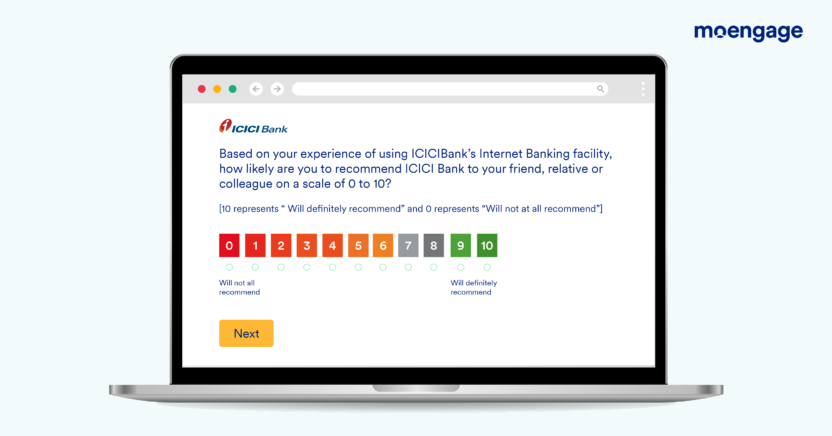
The net promoter score measures the customer’s loyalty.
It is a single survey question that you ask your customers to gauge if they would recommend your product to others. The customer can rate on a scale of 0-5 or 0-10.
Scores that are between 0-6 are considered detractors. 7-8 are passives, and 9-10 are promoters. Detractors are unhappy customers who are likely to churn. Passives are currently satisfied but may churn if the competitor provides a better experience. The promoters are the loyal customers of your brand who will recommend it to everyone. To calculate NPS, subtract the percentage of detractors from the percentage of promoters.
Customer Effort Score
The customer effort score (CES) measures the product’s convenience. Customers despise complexities. They want the product to be simple to use. CES will allow you to gauge how much time it takes to complete a task, such as purchasing a product or finding information. The customer has to rate whether they found the experience easy or difficult.
To calculate CES, take the sum of all scores and divide them by the total number of respondents. According to Gartner, 96% of customers would churn if this score was high. So, identify the customers’ pain points and fix them to make the entire experience simple and frictionless.
Continuous monitoring and iterations are essential to improve the experience and attract desired customers.
What Are The Best Practices For Gathering Customer Feedback?
You can use these tips to get the best results.
Simplify the Process
Customers don’t have time to fill out lengthy forms. Keep the feedback form as simple as possible. Take the Cult.fit app, for instance. After every live fitness session, they request feedback from their consumer. The customer has just to select the appropriate options to share their experience. There’s also a feedback box at the end to submit detailed feedback.
Pro tip: Make it easy for the customer to leave feedback. Allow them to send direct messages as a quick feedback option.
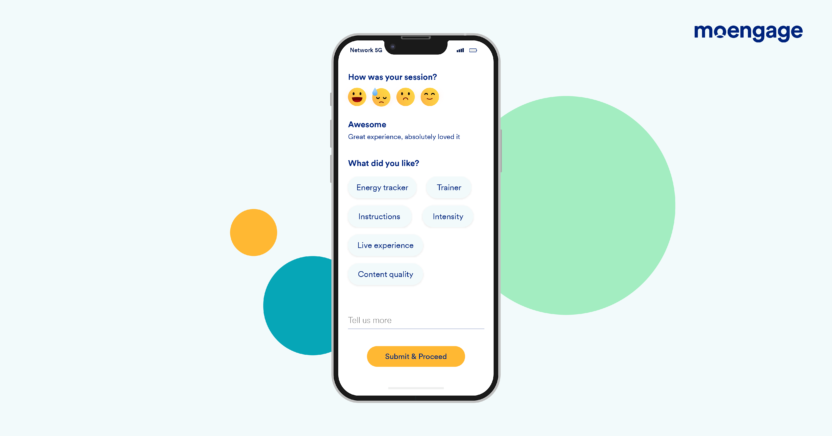
Offer Incentives for Feedback
Customers usually don’t share feedback if they are satisfied with the product or service. You can offer incentives to encourage customers to provide positive feedback. The incentives could be in the form of discount coupons or free resource material that’s typically behind the paywall.
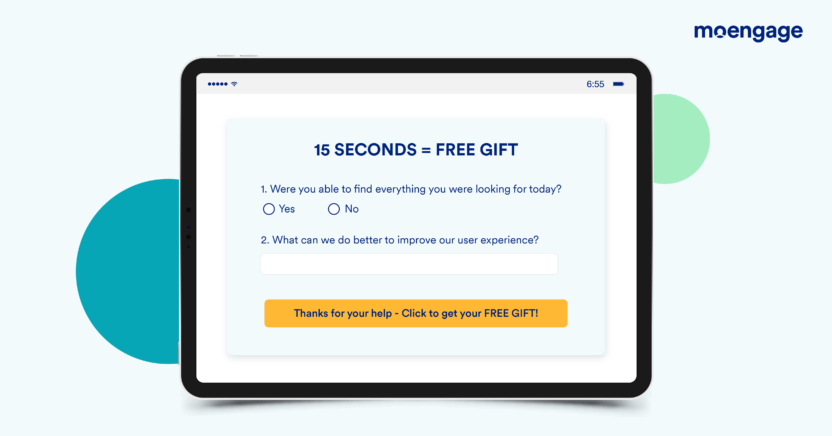
Collect Customer Feedback From All Channels
Customers use multiple channels to interact with brands and can sometimes use these to send in their opinions. Some customers prefer calls. Others may choose to send emails or post on social media.
But since customer feedback is essential, dedicate resources to all channels and focus on them equally to attend to the customers.
Collecting feedback from different channels will help you gain insights into customer expectations. For example, feedback boxes for the in-store experience will differ from the app experience. Focusing on both will help you improve the experience across both channels.
Be Responsive
Customers prefer to engage with responsive brands that understand their needs. So, always respond to customer feedback in a short turnaround time. Never ignore or get defensive when a customer gives a negative review.
Pro tip: Don’t delete negative feedback. Negative feedback helps you gain insights into existing product features. Most demanded feature requests and other improvements that could enhance the experience. So, always respond to genuine criticisms. It can help you improve customer retention.
Personal Outreach
Sometimes, you need high-quality feedback from customers, especially from early adopters, to improve your product or service. Those insights cannot be captured well through feedback forms that follow a restrictive template. Personal outreach through customer interviews or in-person interactions will allow your customers to share detailed and valuable insights about the product or service.
Customers feel valued when they are made a part of the process. Personal outreach encourages your customers to be more participative and invested in your vision.
How to Improve Customer Feedback?
Plan a Customer Feedback Strategy
You must design a well-planned customer feedback strategy to receive actionable customer feedback. Define the objective for collecting customer feedback.
For example, you can design a feedback strategy to gain customers’ opinions on the new features or prioritize features from the number of feature requests you receive. The ultimate goal is to provide a better customer experience. The next step is to execute the strategy. Determine the different methods you can use to collect feedback.
Finally, use customer analytics to measure the effectiveness. Keep iterating the strategy to improve the customer service experience.
Be Proactive in Collecting Customer Feedback
Customers will not give their opinion unless they share a negative or exceptionally great experience. To gather more feedback, proactively ask customers for feedback.
Ask for feedback after the customer completes a transaction and at every customer journey stage. For example, add a feedback button on the order confirmation page to get feedback.
Get the Right Timing
Determine the right time to collect feedback. For example, you can trigger a feedback email or push notification immediately after the person has purchased a product to know if the checkout process was seamless. However, if the customer might use the product over time, you must trigger an email a week after the purchase. That will give the customer time to explore the product and provide authentic feedback.
Pro tip: Smart workflows like MoEngage Flows can help you trigger feedback immediately during the customer journey.
Categorize To Act On The Feedback
Acting on the feedback is your way of showing the customer that you value them. HubSpot has recommended the Ask, Categorize, Act, Follow-up (ACAF) feedback loop. When you receive the feedback, categorize it into buckets, such as customer service, product, and accounting queries, and forward it to the relevant departments.
Pro tip: Categorization allows you to respond to the customer more meaningfully. It also gives you insights into common challenges that customers face. For example, a bug in the product might not allow a customer to renew their plan. Act on it by flagging the issue to your product team.
Follow-up and Close The Loop
Once you have acted on the feedback, follow up by communicating the outcome to the customer. This will help you build a long-term relationship with the customer. They feel heard and know that you care for them. After follow-up, confirm with the customer if you can close the feedback loop. It indicates that the customer’s query has been resolved and they are satisfied with the response.
What’s Next?
- Find winning tips to onboard new customers in this article.
- Sharpen your expertise in customer engagement with our #GROWTH Academy foundation course.
- Connect with an expert for a detailed discussion about your challenges to new customer onboarding.







